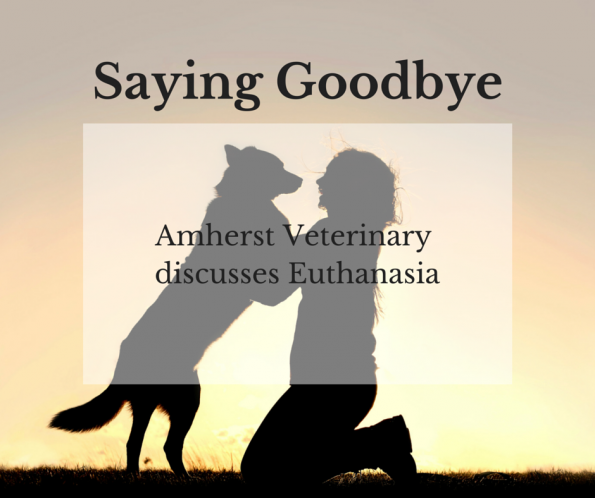The decision regarding euthanasia of a beloved pet may be the most difficult decision you will make during the life of your pet. Whether your pet has been diagnosed with a non-treatable illness, is suffering from debilitating arthritis or is simply aging, there are effective pain control strategies and palliative care options for your declining pet and I would urge you to discuss these with the veterinarians at Amherst Veterinary Hospital in Vancouver. Sadly though, there will come a time when the palliative care options are no longer keeping your pet comfortable. Below are several criteria to consider when determining our pet’s quality of life, the effectiveness of the palliative care being given and when it is time to make the difficult decision of euthanasia for our pets:
Is your pet eating? Quality life involves eating or at least interest in food. An animal that is hungry has vitality although other aspects need to also be considered.
Is your pet comfortable? The pet should be free of debilitating pains, cramps, aches or even the psychological pain that comes from the development of incontinence in an animal who has been housebroken for an entire life.
Does your pet still enjoy favourite activities? The elderly pet does not necessarily need to continue chasing balls or swimming after sticks but he should enjoy sleeping comfortably, favourite resting spots, the company of family…
Does your pet have more good days than bad? Your pet’s condition may wax and wane where appetite, level of interaction and comfort seem better some days than others. When your pet starts having more bad days than good it is time to prepare ourselves that the end is near.
How is the Procedure Performed?
At Amherst Veterinary Hospital the procedure can be performed at the hospital or in your home. First your pet will likely be given an injectable sedative that will help relieve any anxiety. This will take effect within 10-20 minutes.
An intravenous catheter may then be placed. This will be determined by the veterinarian based on the condition of your pet. The catheter ensures access to the vein with minimal restraint needed when it is time to give the euthanasia agent.
After the catheter is placed, your pet will rejoin you in the exam room and you may spend some last time with your pet if desired.
The procedure itself is very fast. The euthanasia solution, generally dyed a bright colour so that it cannot be mistaken for anything else, is delivered intravenously and death comes peacefully in a matter of seconds. You will then be given the opportunity to remain with your pet for final private goodbyes. Understanding what the process entails, you can best decide whether your children should be part of this process.
When you are ready, simply exit the room and we take care of the rest. Let your veterinarian know if you would like a pawprint or lock of fur from your pet as a keepsake.
What Happens to my Pet Afterwards?
Until We Meet Again is a pet memorial centre that offers professional and caring cremation services for your pet.
You will have the option of a communal cremation or a private cremation for your pet. After euthanasia is complete we will contact Until We Meet Again and work with them to ensure your pet’s remains are handled expediently and with dignity. If you choose a private cremation for your pet we will contact you when the ashes are ready to be picked up.
Autopsy (called necropsy in veterinary medicine) is available through our local veterinary pathology lab. There are different levels of detail for this procedure and may help provide closure if you have unanswered questions. Your pet’s remains will be cremated as above after the necropsy. Your veterinarian can help you decide if this is something you want to pursue.
Grieving
Grief is a natural part of loss and has predictable stages. Do not feel ashamed or embarrassed about grieving for the loss of an animal. Our pets are beloved family members and their loss is keenly felt. There are many resources available to assist in your grieving process.
The UC Davis School of Veterinary Medicine has a Pet Loss Support Program that offers toll-free telephone support to callers. The hours are Monday through Friday, from 6:30 am to 9:30 pm Pacific Standard Time. 1-800-565-1526
In addition, the following on-line areas may be helpful:
I hope that the information provided answers the questions you may have surrounding euthanasia and your pet. As difficult as it is to say goodbye to a cherished pet we hope to make the process as peaceful and stress free as possible.

